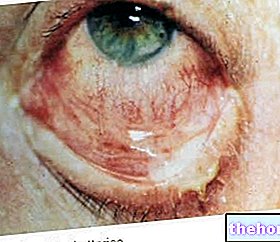So is Aniridia
Aniridia is a congenital disease characterized by the complete or partial absence of the iris. The condition can be hereditary, sporadic, or be part of a syndrome.
Aniridia is not limited to a developmental defect of the iris, but is often associated with a series of ocular complications present from birth or with late onset: reduced visual acuity, macular and optic nerve hypoplasia, nystagmus, amblyopia , cataracts and corneal changes.

Causes
Aniridia is caused by a genetic alteration affecting the AN2 region of the short arm of chromosome 11 (11p13), which includes the PAX6 gene, or by the deletion of the sequences that control its expression. PAX6 provides instructions governing a cascade of other events involved in the early development of the eye and other non-ocular structures, such as the brain, spinal cord and pancreas.
The clinical expression of the disease is variable and depends on the type of alteration affecting the 11p13 region (mutation, deletion, translocation, insertion, etc.). Some defects seem to inhibit more the function of the PAX6 protein products, while others guarantee expression. sufficient gene to produce a mild phenotype.
Isolated aniridia. The disease can manifest itself, for the first time, in a child born to non-carrier parents. Sporadic mutations, which cause the onset of aniridia, can occur without systemic involvement, due to de novo deletions on chromosome 11p13.
Syndromic aniridia. In a minority of cases, if the genetic defect affects the WT1 region, adjacent to the AN2 region, the disease can begin as a syndrome and is associated with other non-ocular anomalies, such as nephroblastoma (Wilms tumor) or other defects. development.
Consequences on vision
Aniridia presents with a variable degree of hypoplasia (incomplete development), up to the absence of the iris in both eyes, associated with other more or less serious ocular characteristics:
- The pupil, very large or deformed, determines hypersensitivity to light and glare.
- The vascularity and opacity of the cornea can cause defects in the refraction of light.
- Cataract (clouding of the lens) occurs in 50-80% of patients and can impair vision.
- The lens can be subluxated (displaced from its normal location).
- Poor development of the fovea (central area of the retina of maximum visual acuity) or the optic nerve can cause nystagmus and decreased vision.
- Over 50% of people with aniridia develop glaucoma (high intraocular pressure, which can cause permanent damage to the retina and optic nerve).
Other health problems
Aniridia can occur without implication for other body systems or as part of a syndrome (a group of signs that constantly occur together).
- In Miller syndrome, aniridia is associated with a malignant neoplasm of the kidney: Wilms' tumor (nephroblastoma).
- Gillespie syndrome is a combination of aniridia, mental retardation, and balance problems (cerebellar ataxia).
- WAGR syndrome manifests with aniridia, genital abnormalities, mental retardation, and Wilms tumor.
Diagnosis and Treatment
The main diagnostic feature of aniridia is the partial or total absence of the iris; hypoplasia of the fovea, with reduced visual acuity, is almost always present and is associated with the early onset of nystagmus. Other ocular abnormalities, usually with late onset, result in further impairment of visual function and should be monitored carefully. These conditions include: cataracts, glaucoma, and corneal opacification. Once aniridia has been diagnosed, periodic eye exams are therefore required, often throughout life. The frequency of visits depends on the clinical expression and extent of the disorder. In children with a PAX6 gene deletion. Monitoring of renal function and frequent ultrasound checks is recommended.
The therapeutic approach is aimed at improving visual acuity and managing any complications associated with aniridia pharmacologically or with surgery. The prescription of glasses can correct refractive errors. The use of colored or photochromic prescription lenses is instead useful for avoiding glare and reducing hypersensitivity to light.




























